One careful owner Andrew Dunsdon works in the motoring industry and has been a member of Porsche Club GB for 15 years. Having previously owned a 944 S2 and a 964 Targa 4, he bought this Boxster two years ago from a retired couple.
They had owned it from new, keeping and using the car sparingly at a holiday home in East Anglia. As a result, it was in near mint condition with remarkably few miles on the clock.
Andrew has maintained S50 BOX (the numberplate came with the car!) with independent specialists and undertaken only minor cosmetic work to bring it back to show standard.
Many thanks to Andrew for braving the tail end of Storm Christoph for our shoot and for driving al fresco when the mercury was barely past zero.
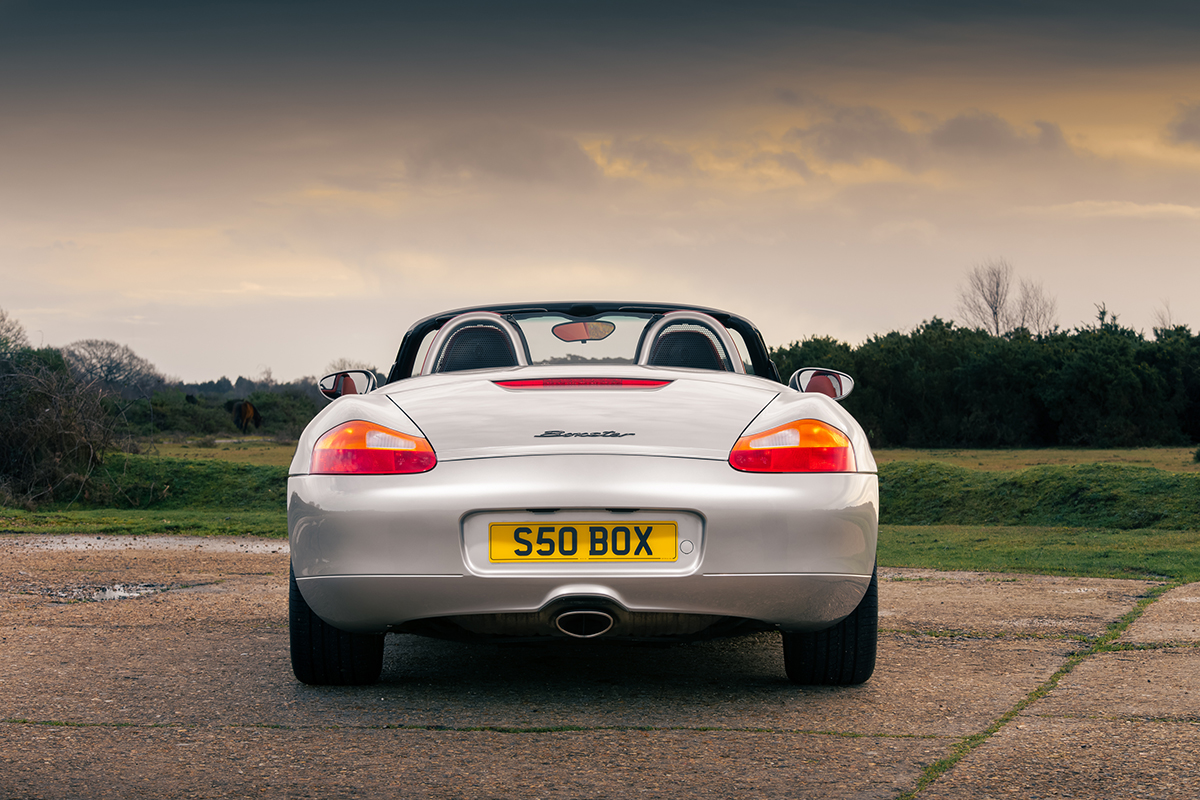
It’s a familiar if simplistic trope that the Boxster, a quarter century old this year, saved Porsche from financial ruin. What it definitely did was provide a new way of both thinking and making that enabled a company in crisis, caught in decreasing circles of ambition and profit margin, to reinvent itself utterly.
The internally coded 986 heralded a new era for Porsche as a diverse and modern global brand. It reached out to a new generation of customers and helped create a business case for the even more unlikely, and more valuable, Cayenne. As the vanguard of a wider push, the Boxster changed everything.
By 1990, Porsche’s portfolio consisted of the 964 generation 911 alongside the last iterations of the 944 and 928. The 964 was already something of a relic in respect of refinement, emissions and economy, and wasn’t selling as it needed to in key markets such as the US. The entry-level 944 had evolved to bursting point, over eight years of continuous production, and was due to be superseded briefly by the 968.
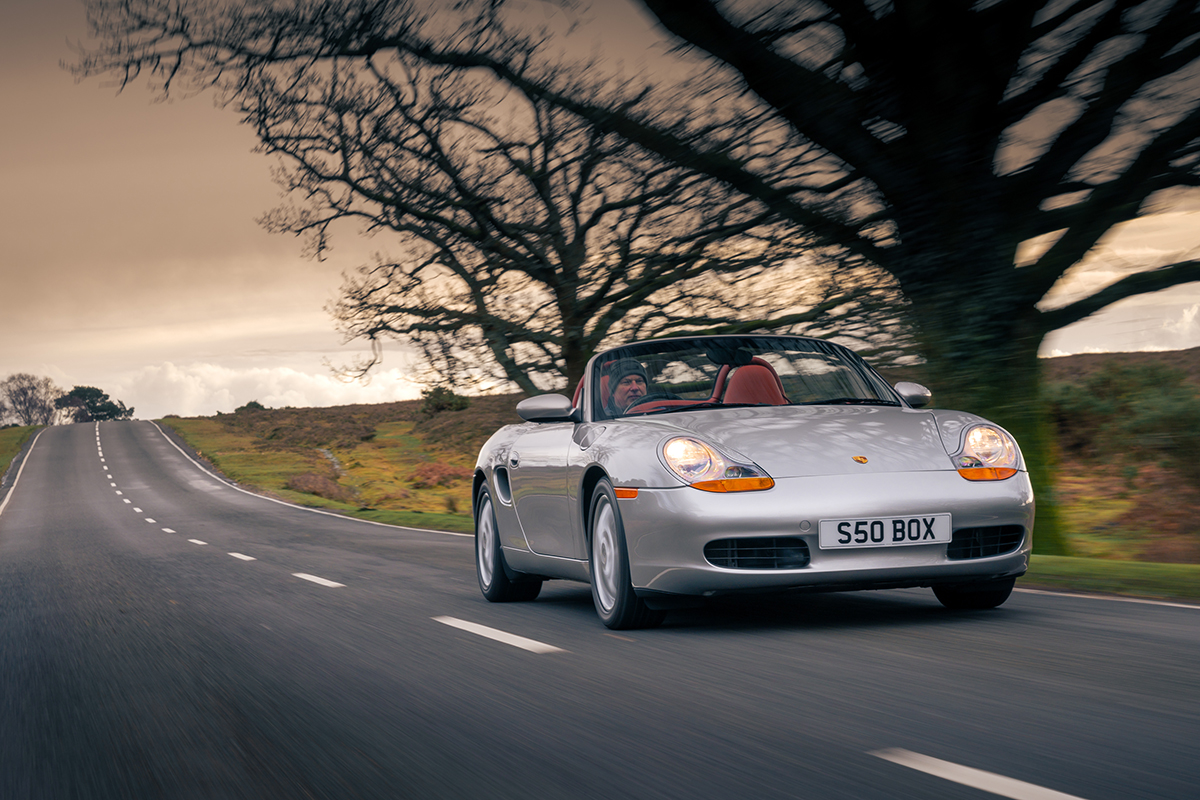
The 928, meanwhile, had never again enjoyed the adoration of its 1978 European Car of the Year gong, and would continue to sell in inconsequential numbers for another half decade before Porsche finally threw in the towel. The company needed a shot in the arm. It needed a product that would reignite the fire around the brand for the next generation of sports car buyers.
Under the auspices of Dutch design chief Harm Lagaay, it was young American Grant Larson who was given free rein to draw up the solution. Larson’s design was based around the basic principles outlined in 1991 by Horst Marchart, Member of the Executive Board for Research and Development, for a two-seat roadster with a price point significantly lower than the new 911, with which it must share enough design DNA to be instantly recognisable as a Porsche. Quite the wish list.
Larson evoked past masters such as the 550 Spyder and 718 RS 60, but he ultimately arrived at a wholly contemporary final concept that was unveiled at the Detroit Motor Show in January 1993. The public’s imagination was duly fired – a Porsche for the modern age and one which would be much more affordable than the 911. “Shortly after the presentation in Detroit, we were instructed to stop series design development for the Boxster immediately,” Larson recalls today. “The instruction instead was: ‘Please build the concept exactly like that.’”
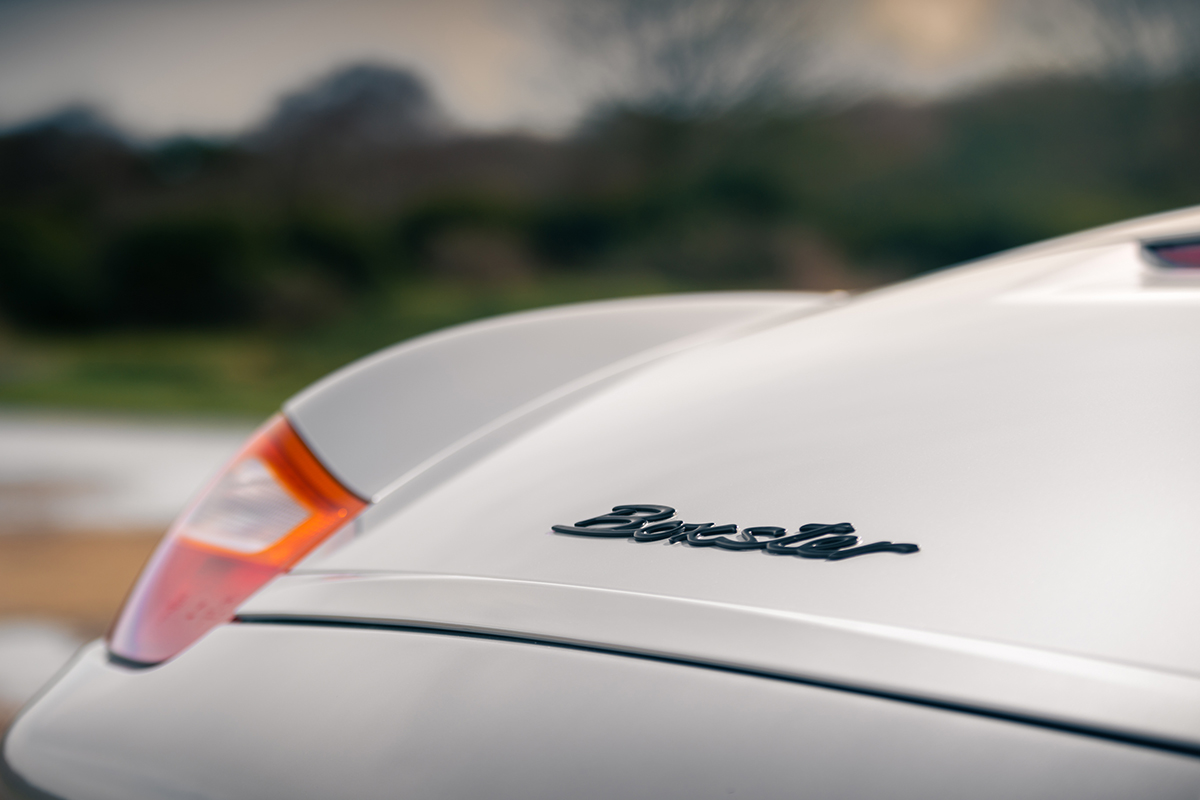
Which is by and large what happened. The first production Boxsters rolled off the line in 1996 and sold faster than the paint could dry. Marchart’s shrewd insistence that the Boxster and 911 look alike had not been wholly driven by aesthetic considerations, and when the new 996 generation 911 arrived the following year it was greeted with consternation.
The front end of both Boxster and 911 were visually and mechanically identical as far back as the A-pillar. This was COP, or carry-over parts, in full effect. Porsche had abandoned its old manufacturing processes in favour of the sort of high-volume strategic practices of far larger companies. And while 911 buyers objected to the visual similarity with a lesser product, it was nothing if not a boon for the Boxster, whose status was correspondingly elevated.
Worse news was to come for the already disgruntled GT diehards. The light, balanced and equally sonorous little Boxster also turned out to be superb to drive. It was more than 20 years since Porsche had last brought a mid-engine road car to market, and while the worst of the 911’s handling foibles were largely laid to rest, this was nevertheless a step change for the average customer, for whom inherent handling neutrality and more modest grunt created a hitherto unknown degree of approachability.
The Boxster we photographed for this 25th anniversary was kindly provided, and driven in truly bone-chilling January temperatures, by long-standing Club member Andrew Dunsdon. A perfect early example, Andrew’s car is the original 2.5-litre model in classic launch specification, wearing its modest 39,000 miles incredibly well.
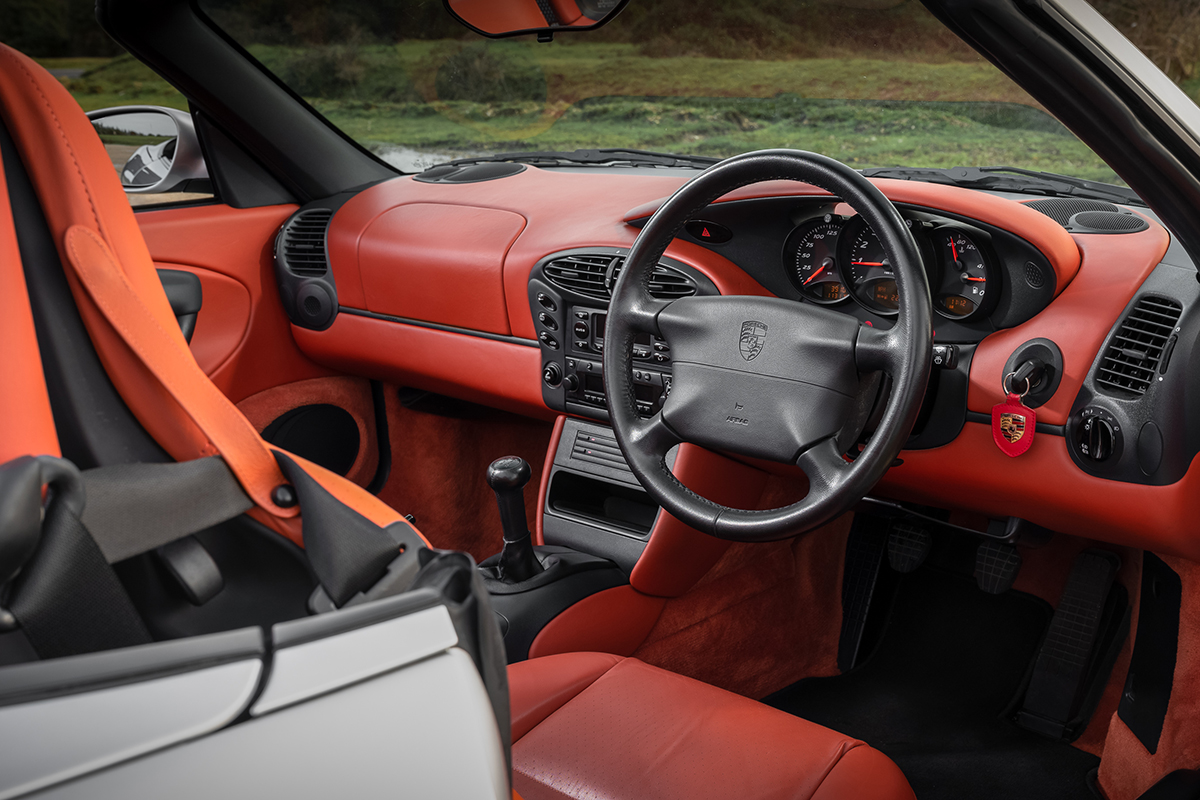
In such condition, the car creates a rare and invaluable window on to what it would have been like to behold the Boxster new all those years ago. The modest proportions and simplicity of overall design are a far cry from today’s 718 equivalent, and there is an enviable sense of purity, quality and purpose to the car that underlines just how well resolved the Boxster concept was. Larson’s elegant silhouette, punctuated by unfussy but defining details, has an effortlessness to it that has weathered the intervening years to achieve something close to timelessness today.
Even if it hadn’t aged quite so well, the significance of the 986 would still be undeniable as a product that was instrumental in helping Porsche steer itself out of choppy waters and into a buoyant new era of profitability.
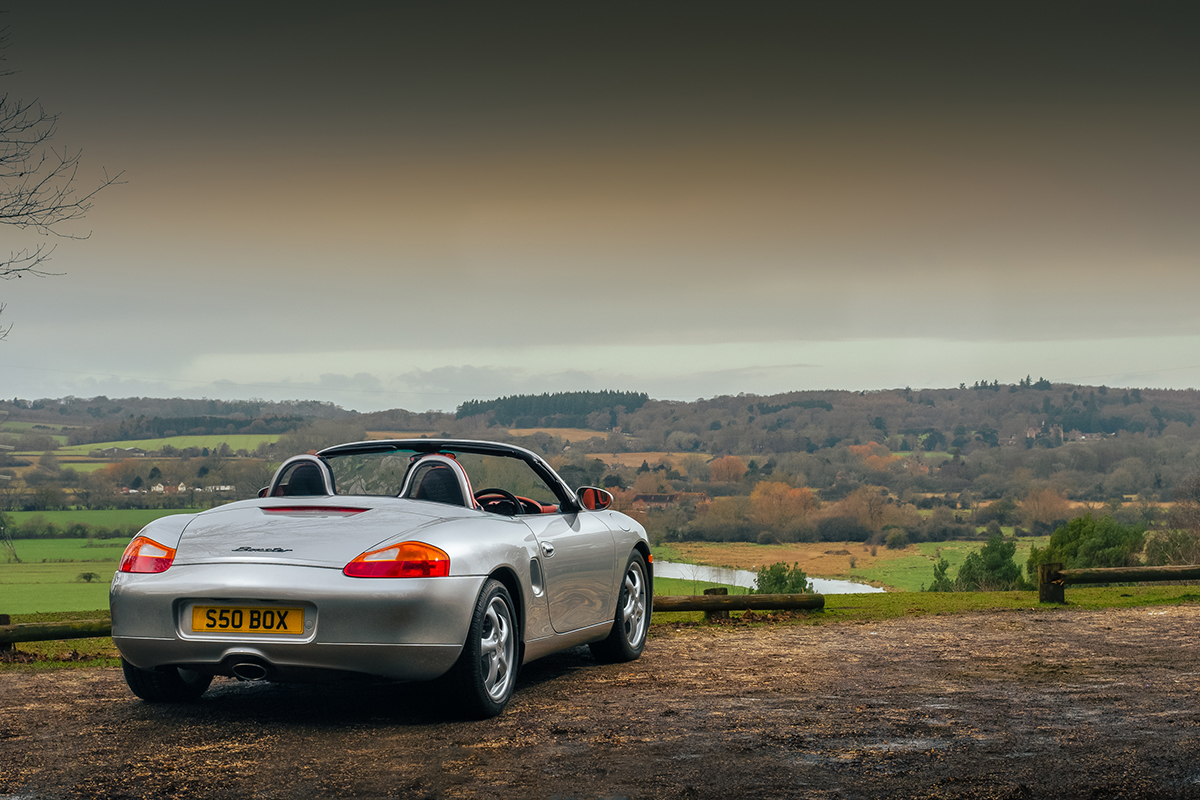
But it did more than just refill the coffers in Zuffenhausen. Arguably, the greatest part of the Boxster’s legacy is that after the decline of the transaxle cars it paved the way for Porsche to diversify without any perception of compromise. The Boxster was a Porsche through and through, despite being more affordable than the 911. The benefits of a mid-engine configuration were accepted and revelled in. Proof positive that there was more than one way. A prescient stance from Horst Marchart, an inspired design by Grant Larson, and the courage to go for it. A perfect Porsche story.
To view the full collection of photographs, please click here.